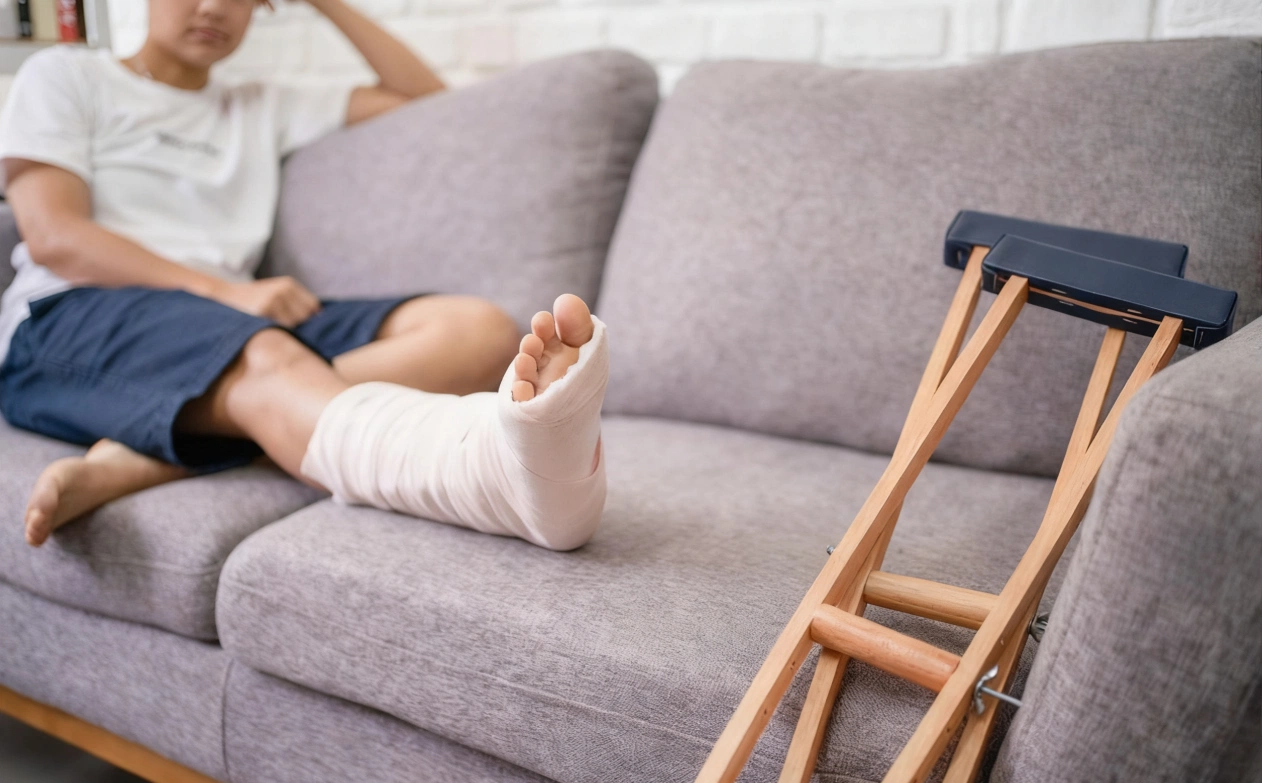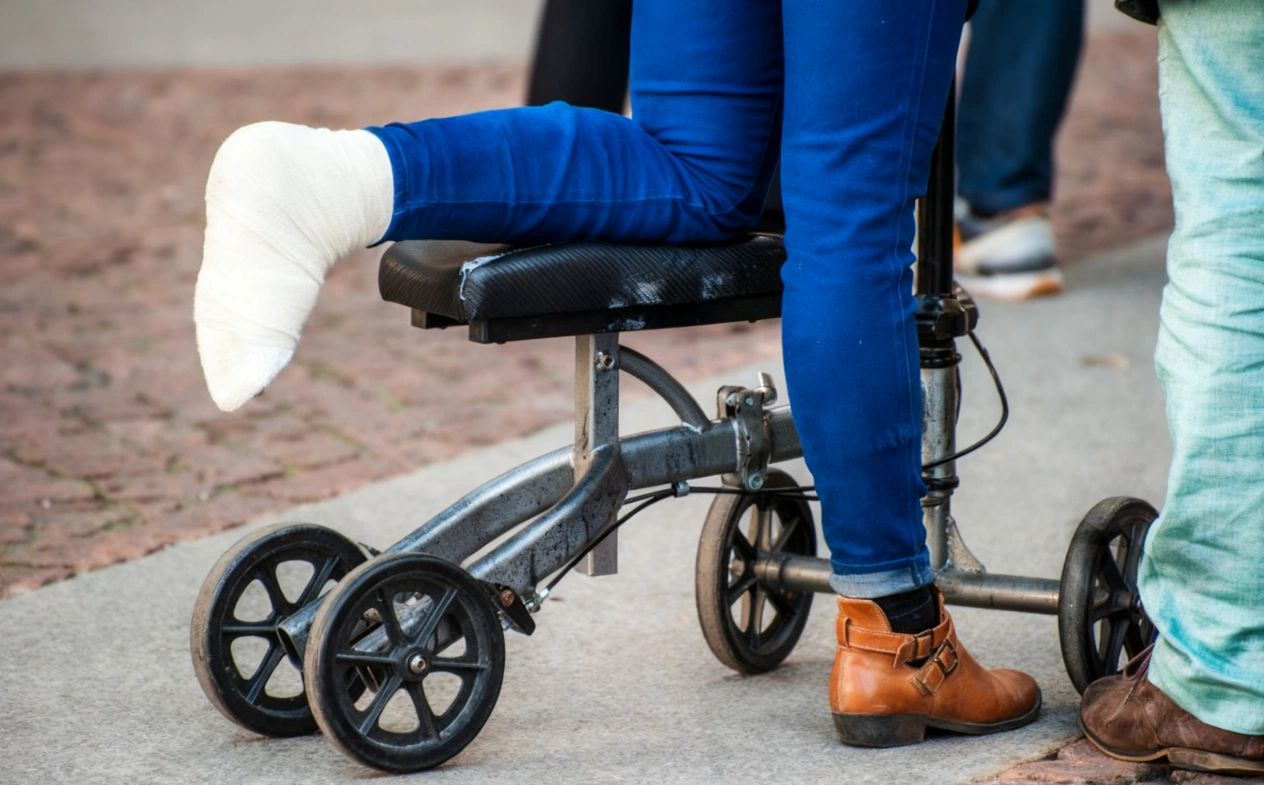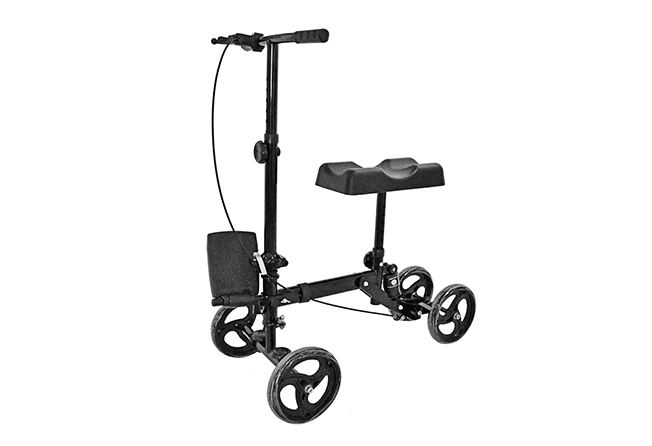The Evolution of Mobility Aids: From Crutches to Hands-Free Knee Walkers
Time : Oct 16, 2025 View : 1,368
Mobility aids have changed a lot. They started with just a basic stick. It helped people with short-term or long-lasting movement problems. Now, we focus on things that are useful and comfy. But not every tool gives the same amount of ease or freedom. This piece looks at the shift from simple crutches to better options like the knee rollator. It has changed things in the field of mobility aids. If you have ever had trouble staying steady after twisting your ankle, or if you want to keep your hands free while getting better, this is for you. We will check out what helps, what falls short, and why steerable knee walkers are great for everyday healing.

Limitations of Traditional Mobility Aids
For decades, traditional mobility aids formed the backbone of support for anyone dealing with leg or foot issues. They were reliable in a pinch, but reliability alone doesn’t always cut it when you’re trying to maintain a slice of normalcy during recovery. Let’s dig into the shortcomings that pushed innovators to rethink these everyday helpers, starting with the classics that many of us still remember from our first sprain.
Crutches: Universal but Uncomfortable
Crutches showed up as the main choice for fast fixes. Think of a broken toe or swelling after surgery. You find them in hospitals when you leave, or in stores. They shift weight to your upper body. That seems easy. But the steady push under your arms causes pain that grows quickly.
Even worse, crutches need a beat that’s hard to keep. Swing ahead, set them down, do it again. It tires you out, mainly on bumpy paths or steps. Your hold gets weak, and you feel worn out sooner than you think. It’s no shock that checks from healing centers say up to 40% of users talk about skin rubs or nerve pains from long use. These common tools do well for brief times. But they struggle when life needs more than just getting by.
Moving away from the arm-tiring side of crutches, we come to another key item. It’s all about being steady. Yet it comes with its own downsides. Walkers, with their four legs, give a firmer base. But they carry extra weight that can slow down daily tasks.

Standard Walkers: Stable but Cumbersome
Standard walkers provide a broad base that seems safe. It’s like leaning on a trusted pal during shaky times. They suit slow steps well. They spread weight even across both legs when one is weak. But lift one, and you feel the heaviness right off.
With standard walkers, small areas in kitchens or baths turn into fights. Folding them to store often means dealing with stiff parts. Plus, the bent-forward pose it makes can bring back aches over time. Experts in healing have seen that these helpers, while steady, can limit how far you step and how fast you go. This slows healing overall by messing with normal walking ways.
These issues are not small bothers. They eat away at your sureness. When a tool seems more like a block than a boost, folks move less. And that’s the last thing healing wants. It’s clear why folks want lighter, quicker choices now. This has led right to the next set of new ideas.
The Rise of Rollators and Knee Walkers
As complaints about older assistive devices grew, designers rolled up their sleeves and crafted a solution that cleverly blended wheels with ergonomics. Rollators and knee walkers emerged not as gimmicks but as practical upgrades, filling gaps left by crutches and walkers. This change happened quietly in medical supply spots. But its the effect on daily stuff? Huge. To get why, think about how these tools changed help for certain needs. Like no weight on a leg after an operation.

Four-Wheeled Rollator: Introducing Independence
The four-wheeled rollator is a mobility aid that trades the pull of old walkers for easy rolling. Imagine sliding across a store floor instead of dragging your feet. Brakes on the handles let you stop without fuss. And a seat drops down for quick breaks. These are not just carts. They are buddies who push for longer trips.
What makes them different is the seat and basket mix. It turns chores into easy tasks. For people with joint pains or slight balance slips, the rollator’s changeable height fits just right. It helps you stand straight, which eases hip strain. Numbers from mobility aid sales show a 25% rise in rollator use over the last five years. This proves that freedom draws people in.
But while rollators do great for general stuff, they don’t always fit exact cases like foot healing. That’s where a more focused design steps up. It links broad help with careful surgery needs.
Knee Walker: A Specialized Solution for Foot Surgery
The knee walker, often called a knee scooter walker in everyday talk, hits the right spot for foot and ankle operations. Instead of limping on one leg, you rest on a soft platform. You steer with bars while wheels do the work. It’s like a scooter for adults in healing mode. Small, fast, and gentle on your body.
Post-bunionectomy patients love how it keeps the surgical site untouched, reducing swelling risks that crutches might stir up. Adjustable heights mean it adapts to your build, from 4’10” to 6’4″, and many models lock wheels for safe transfers. Studies in orthopedic journals peg recovery times at 20% shorter compared to crutch users.
This popularity isn’t hype, but real patient feedback. However, one variant consistently takes the lead: the steerable knee walker, which adds directional control for a better user experience, greater comfort, and greater convenience.
The Unique Advantages of the Knee Walkers
Knee walkers aren’t just evolutions; they’re revolutions in how we approach healing. They tackle pain points head-on, from arm fatigue to restricted reach, all while keeping the focus on what matters: getting back to you. Dive deeper, and you’ll see why features like steering and padding make them indispensable for anyone eyeing a smoother path forward. Let’s break down the standout perks that turn “getting by” into “thriving.”

Unmatched Comfort and Elevated Mobility
Comfort starts with the basics: a cushioned knee pad that cradles without pinching, far from the rigid bars of yesteryear. Steerable knee walkers shine here, with ergonomic grips that cut hand strain by 30%, per user trials. These devices let you navigate turns without wide swings, making them ideal for apartments or offices.
Take the carbon steel knee walker—light at under 25 pounds, it zips at speeds crutches can’t touch, often up to 3 mph on flat ground. Durability meets portability; foldable knee walker designs collapse in seconds for car trunks or closets. And for those on the go, the portable knee rollator version slips into travel bags, ensuring recovery doesn’t pause for vacations.
From comfort’s soft landing, we glide into the real magic: reclaiming the little freedoms that make days feel full again. Hands-free design isn’t a luxury; it’s a lifeline for multitaskers in recovery.
Restoring Freedom and Hands-Free Convenience
Imagine reaching for a coffee mug mid-stride or waving hello without dropping your phone—that’s the hands-free promise of the knee rollator. Unlike walkers that tie up both mitts, these let you multitask, fostering a sense of normalcy that’s crucial for mental health during downtime.
The foldable knee walker from trusted knee rollator manufacturers amps this up with one-handed folds and adjustable steering for precise control. Xunyu Medical’s knee rollator-602 embodies this perfectly. Crafted from high-carbon steel, it weighs just 22 pounds yet supports up to 230 pounds—portable enough for daily jaunts, sturdy for active lifestyles. The steerable knee walkers feature in their line include a breathable knee pad that stays cool during long hauls, and its quick-fold mechanism means storage woes are history. As a leading knee rollator manufacturer, Xunyu prioritizes user trials in design, ensuring the high-carbon steel knee walker glides silently over carpets or tiles.
These touches restore not just steps, but stories—dinners cooked, dogs walked, lives lived. If mobility aids once felt like chains, knee scooter walkers like Xunyu’s break them, one effortless push at a time.
The Future of Mobility Aids: What’s Next?
Peering ahead, the horizon for mobility aids buzzes with promise. We’re leaving behind one-size-fits-all gear for tailored tech that anticipates needs, not just reacts. Innovations on the horizon build on knee walkers’ successes, blending smarts with simplicity to make recovery feel futuristic yet familiar. What might that look like for the next generation of users?
Smart Technology Integration
Smart tech is sneaking into knee rollators, turning passive tools into active partners. App-linked sensors could track stride patterns, alerting your phone to overexertion or suggesting rest breaks—vital for preventing setbacks in foot surgery recoveries.
Voice commands might adjust heights on the fly, or GPS tie-ins could map accessible routes. Prototypes from forward-thinking knee rollator manufacturers already test Bluetooth brakes that sync with smartwatches for heart-rate monitoring. Early adopters in pilot programs report 15% more confidence outdoors, hinting at a world where mobility aids whisper encouragement rather than demand attention.
Lightweight and Adaptive Materials
Gone are the days of clunky metal; adaptive composites promise knee walkers under 20 pounds without skimping on strength. Carbon fiber blends could morph slightly for custom fits, easing pressure on varying body types. Eco-friendly swaps, like recycled alloys in the aluminum alloy knee walker, nod to sustainability while holding firm.
Breathable fabrics for pads, infused with antimicrobial threads, cut infection risks post-op. Foldable knee walker evolutions might self-deploy, popping open at a tap. Experts forecast these shifts slashing shipping weights by half, making portable knee rollators as common as backpacks. Such advances ensure mobility aids evolve with us—smarter, lighter, greener—paving smoother paths ahead.
Conclusion
The knee rollator is a strong answer for the pains and blocks in older mobility aids. It mixes comfort, quick moves, and freedom into one neat set. From the steerable knee walkers that handle turns easily to the foldable knee walker that stores without work, these tools change healing ways. As technology grows, we look for items that plan ahead, get light, and fit into busy days. This brings times when getting better seems less like work and more like a step to the future.
Ready to step into easier days? As a premier knee rollator manufacturer, we craft high-carbon steel knee walkers built for real recoveries. Contact Xunyu Medical at paddy17727303057@outlook.com today and we will provide you with customized services to make your travel easier and more convenient.


